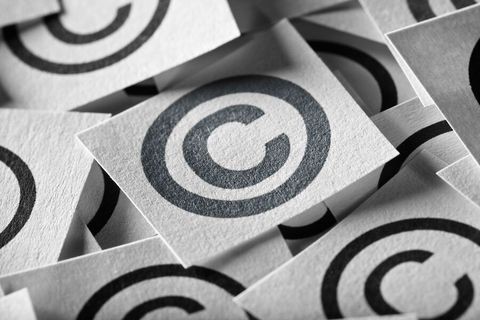Iran Triggers Dispute Resolution Mechanism Under JCPOA
Client Alert | 3 min read | 07.08.20
On July 3, 2020 Iran initiated a dispute resolution mechanism contained in the Joint Comprehensive Plan of Action (JCPOA), more commonly referred to as the Iran nuclear deal, to address concerns over implementation of the deal. The EU’s Foreign Policy Chief stated that he had received a letter from Iran triggering the dispute mechanism over concerns regarding implementation issues by the United Kingdom, France, and Germany. No details about the nature of Iran’s concerns were provided.
As set out in Paragraph 36 of the JCPOA, if Iran believes that any or all of the deal’s signatories were not meeting their commitments, Iran can refer the issue to the Joint Commission for resolution. The Joint Commission, consisting, since the U.S. withdrawal from the deal in May 2018, of China, Russia, the United Kingdom, Germany, France, and Iran would then have 15 days to resolve the issue, unless the Joint Commission parties mutually agree to an extension. If the issue remains unresolved, it may be reviewed at the Ministerial level and then by an Advisory Board consisting of two members appointed by the JCPOA states involved in the dispute and one independent member. If, after the Advisory Board issues a non-binding opinion, the Joint Commission still does not resolve the issue, it would be grounds for the complaining participant, in this case, Iran, to cease performing its commitments under the JCPOA and notify the UN Security Council (UNSC) that it believes the issue constitutes significant non-performance of the deal. Upon such notification, the UNSC would then have 30 days to vote on whether or not to continue with the sanctions lifting as outlined in the Iran nuclear deal. If a decision is not made within 30 days, then prior UNSC resolutions imposing sanctions against Iran would be re-imposed automatically. Iran has made clear that if sanctions are reinstated in whole or in part, that it will treat that as grounds to cease performing its commitments under the JCPOA.
This is the second time the dispute resolution mechanism of the JCPOA has been triggered. In January 2020, the UK, France, and Germany triggered the mechanism to force discussions on possible violations of the deal based on Iran’s refusal to be bound by the uranium enrichment limits of the deal. After negotiations between those parties and Iran, the dispute resolution mechanism was later suspended. No party, including the United States during its withdrawal from the deal, has triggered the full dispute resolution mechanism and followed the process to its conclusion with a UNSC vote.
Practical Considerations
The immediate practical effect of Iran’s complaint will be limited while the dispute resolution procedures play out. This could change if Iran claims grounds under the dispute resolution mechanism to cease performing its commitments under the JCPOA. Although Iran is unlikely to trigger the UNSC’s snapback procedure, in the event that Iran ceases performance, the remaining JCPOA states may decide to do so.
Even before events reach that point, Iran’s triggering of the dispute resolution procedure represents yet another threat to the JCPOA that has been on life support since the U.S. withdrawal in May 2018.
Iran has argued that it is no longer earning the benefits it expected from the deal, while the remaining EU signatories have struggled to provide those benefits, even going so far as to establish a separate payment mechanism, INSTEX. Nevertheless, despite these steps and the UNSC and EU’s repeated statements of support for the deal—as recently as a week ago, Rosemary DiCarlo, Under-Secretary-General for Political and Peacebuilding Affairs at the United Nations told the UNSC that the JCPOA “remains the best way to ensure the exclusively peaceful nature of Iran’s nuclear program. Its full implementation, and faithful adherence to resolution 2231, is also fundamental to regional stability”—many non-U.S. companies have withdrawn from Iran in reaction to the potential threat from U.S. primary and secondary sanctions, leaving Iran’s economy struggling.
Iran’s triggering of the dispute resolution mechanism is unlikely to affect these dynamics insofar as it will have no impact on the U.S.’s previous withdrawal from the deal and it is unlikely to be able to force EU Member States to take further steps to encourage their companies to invest in Iran’s economy. Instead, with every original member of the JCPOA except China and Russia now either having withdrawn from the deal (United States) or having accused the other parties of being in violation (Iran, France, Germany, and the United Kingdom), it remains to be seen just how much longer the deal can survive. If it collapses, that could lead to a renewed Iranian nuclear program and renewed EU and potentially UNSC sanctions sitting in parallel to the re-imposed U.S. sanctions.
Insights
Client Alert | 2 min read | 04.17.25
Will the Supreme Court review the Ninth Circuit’s unique Server Test for online copyright infringement? After the Ninth Circuit recently affirmed the Server Test, a photographer and copyright owner has requested certiorari. Petitioner-Plaintiff, Elliot McGucken, is a landscape photographer. Respondent-Defendant, Valnet, Inc., is the owner of a travel website located at “www.thetravel.com.” McGucken sued Valnet for copyright infringement when Valnet embedded on its site a number of links to McGucken’s Instagram posts. The district court, bound by the Ninth Circuit’s en banc decision in Perfect 10, granted Defendant’s motion to dismiss, finding that the Server Test foreclosed McGucken’s direct infringement claim as a matter of law, because Valnet linked to the images and did not store them on its own servers. The Ninth Circuit affirmed in a panel decision. McGucken now requests the Supreme Court to review the validity of the Server Test, which is unique to the Ninth Circuit.
Client Alert | 5 min read | 04.15.25
Is Section 230 Going to Change? The FTC, DOJ and FCC Signal Significant Change for Online Businesses
Client Alert | 4 min read | 04.14.25
Client Alert | 4 min read | 04.10.25
Hikma and Amici Curiae Ask Supreme Court to Revisit Induced Infringement by Generic “Skinny Labels”



